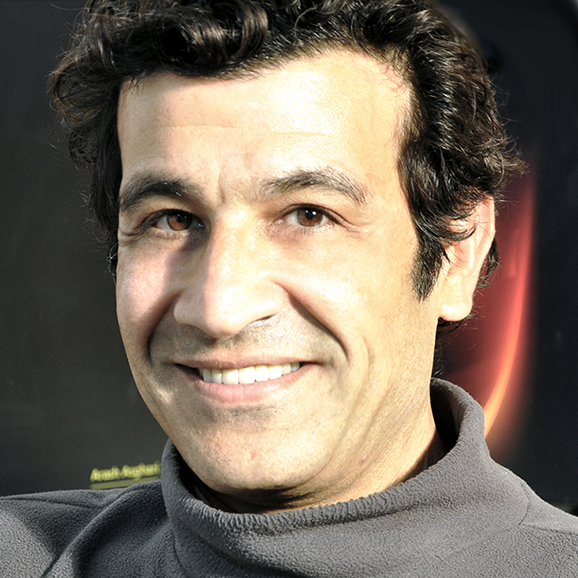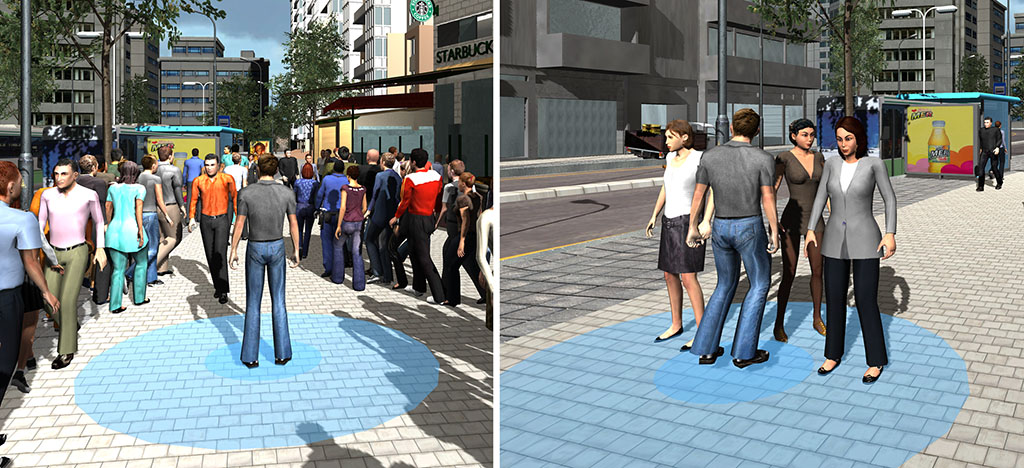Psychophysiological Responses to Virtual Crowds and its Effects on Cognition
Don't Stand So Close To Me! - Proxemics
This research was part of an evaluation of the CAVE facility at Immersive & Creative Technologies Lab Cyprus University of Technology. Project NEKYP/0311/02 “A State-of-the-Art VR CAVE facility for the Advancement of Multi-Disciplinary Research & Development in Cyprus” financially supported by the Cyprus Research Promotion Foundation (RPF) and EU Structural Funds.
Proxemics
Proxemics, a termed coined by Edward Hall in 1963, is a subclass of non-verbal communication that relates to the distances that people maintain between each other out of personal or cultural preference or in different contexts. Hall distinguished between basic categories of distance including intimate, personal, social and public. For example, a zone of 45cm around a person is considered personal territory and reserved only for close friends. Beyond this is social space in which normal interaction between colleagues and strangers takes place. This does, of course, depend on context. Think, for example, of sharing a crowded lift full of strangers. Our normal boundaries in this case must be changed to accommodate the context. In general however transgression of territorial zones may be considered either alarming or even threatening and our physiology has evolved to make us aware of, and react to, these situations.
Physiological Indices of Emotion
Physiological stress is a response to a stressor that can be either a stimulus or an environmental condition. Stress is the body's way of reacting to challenging situations. According to the stressful event, the body's way to respond depends on the autonomic nervous system (ANS). The ANS is the control mechanism that regulates heart beats, perspiration, respiration, pupil diameter and digestion. It is comprised of two main subdivisions: the sympathetic and parasympathetic pathways, which serve opposing functions: the sympathetic nervous system (SNS) prepares the body for action, whilst the parasympathetic nervous system (PNS) promotes relaxation and digestion. Changes in the environment are rapidly processed by the brain to allow orienting of resources toward possible threats. This is done by engaging the SNS which increases heart rate to pump more blood around the body and increased sweating to cool the body down.
These measurable quantities have been used to assess emotional arousal, attention and cognitive effort.
However, the use of a wearable device for measuring arousal and emotional state is problematic. One reason for this is the ever present influence of external factors, such as other people, that make interpretation of data difficult
In this experiment we wanted to simulate the conditions under which a wearable device might operate while measuring CR and EDA to assess autonomic arousal. A crowded street in an urban area with traffic noise, people and movement was used. Specifically, we wanted to address the following questions:
- Does increase in crowd size increase arousal?
- Is there an effect of interpersonal distance?
- Are there any gender differences?
- Does arousal influence cognitive function?
The videos below show what the player experienced in two types of trial of the experiment, which took place in a CAVE. Please download the paper to see the results

